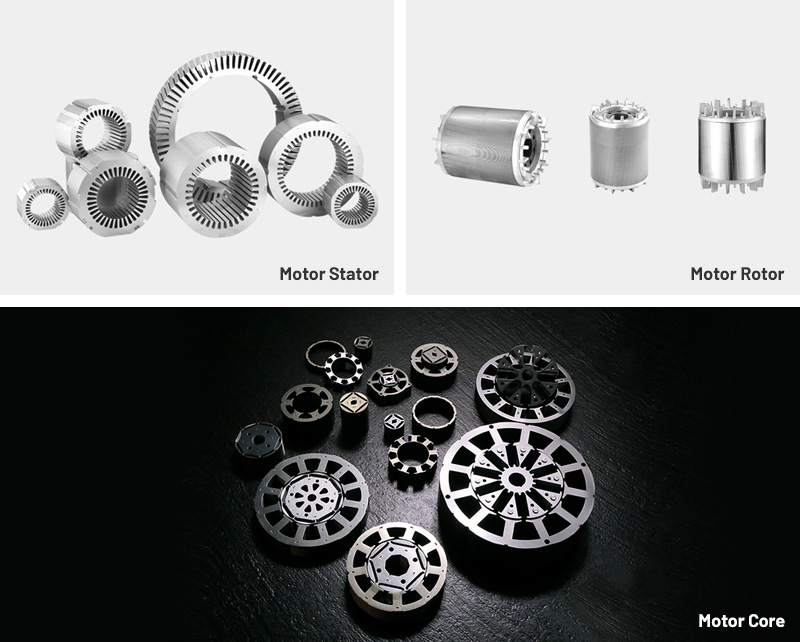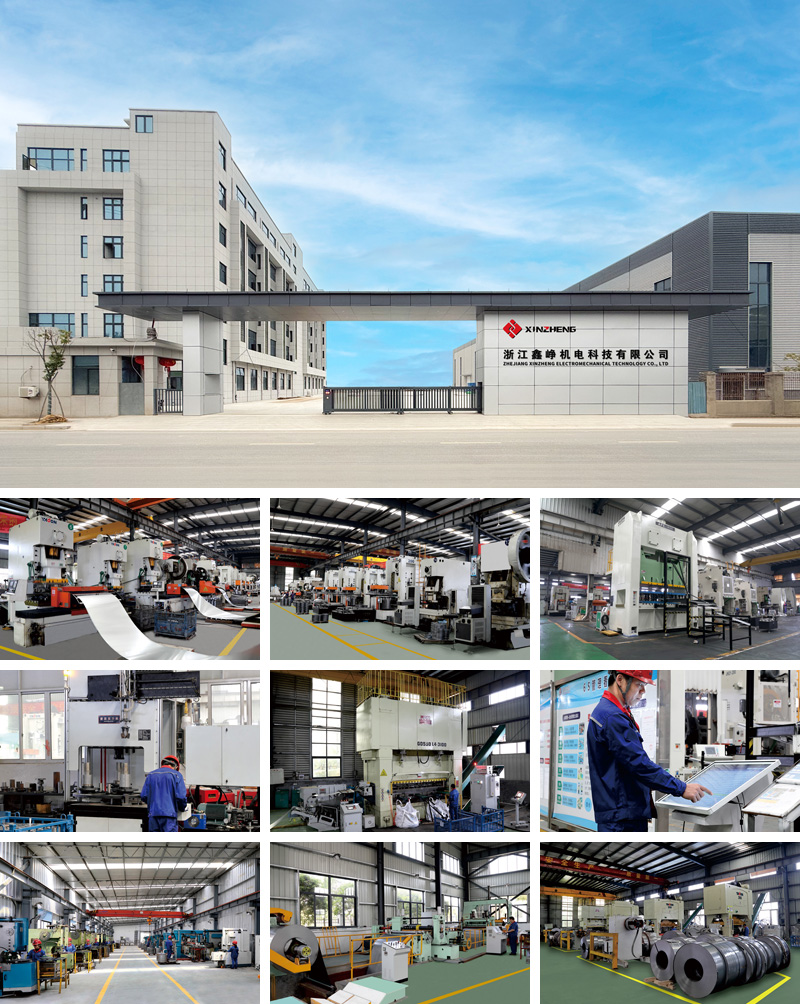High-speed electric motors are increasingly critical in modern industrial automation, electric vehicles, aerospace systems, and precision machinery. The efficiency, reliability, and thermal stability of these motors largely depend on rotor components, particularly high-speed motor rotor laminations. These laminations are designed to guide magnetic flux efficiently while minimizing energy losses from eddy currents and hysteresis effects.
Global trends toward energy-efficient motors and compact high-power designs are driving demand for rotor laminations that maintain performance under high rotational speeds. Industries requiring precise torque control, minimal vibration, and quiet operation rely heavily on advanced lamination technologies to meet regulatory and performance standards.
Rotor laminations serve as the primary path for magnetic flux between stator and rotor windings. Optimized lamination geometry ensures uniform flux distribution, which reduces torque ripple, improves efficiency, and stabilizes motor operation at high speeds.
At high rotational speeds, solid rotor cores generate significant eddy currents, causing heat buildup and energy loss. Laminations made of thin, insulated sheets break the current path, significantly reducing these losses. The thinner the lamination, the more effective the mitigation of eddy currents, a critical factor for high-speed motor applications.
Rotors experience substantial centrifugal forces and thermal stress. Laminations must maintain mechanical and dimensional stability under these conditions. Proper material selection and assembly techniques prevent warping, vibration, and insulation degradation, ensuring reliable motor performance over time.
High-speed rotor laminations are typically manufactured from non-oriented electrical steel, chosen for:
Low core loss and high magnetic permeability
Electrical resistivity to minimize eddy currents
Mechanical strength to endure centrifugal forces
Thermal stability during continuous operation
Lamination thickness generally ranges from 0.20 mm to 0.35 mm, balancing magnetic efficiency with mechanical robustness.
Rotor slot geometry directly affects magnetic flux distribution, winding placement, and heat dissipation. Optimized slot designs minimize vibration and torque ripple, contributing to smoother, quieter operation. Precision in slot dimensions is especially critical in high-speed rotors to maintain balance and prevent performance degradation.
Advanced stamping ensures consistent lamination thickness, smooth edges, and precise slot dimensions. These factors impact magnetic performance, insulation integrity, and overall rotor balance. Laser cutting and high-precision dies are often used for tight tolerances required in high-speed motor designs.
Rotor laminations are stacked using adhesive bonding, mechanical interlocking, or welding. Accurate stacking reduces vibration, maintains rotor-stator alignment, and ensures structural stability under high centrifugal forces.
Each lamination is coated with inorganic or hybrid insulation layers to prevent interlaminar shorts. Uniform coatings enhance thermal stability, reduce eddy currents, and extend operational life.
Material Consistency: Variations in steel composition can increase core loss and reduce efficiency.
Dimensional Precision: Minor deviations in lamination thickness or slot geometry affect magnetic flux and rotor balance.
Insulation Integrity: Uneven coatings can increase eddy currents or cause insulation failure.
Stacking Accuracy: Misaligned laminations contribute to vibration, noise, and reduced torque stability.
Tooling Condition: Worn dies or cutting tools compromise lamination quality, increasing scrap rates.
Stringent quality control is essential to meet efficiency, thermal, and reliability standards in high-speed motor manufacturing.
Choosing the right lamination supplier is vital for high-speed motor production:
Material Certification: Verification of steel grade and magnetic properties
Precision Manufacturing Capability: Ability to maintain tight tolerances
Quality Assurance Systems: Core loss testing, dimensional inspections, and coating verification
Production Stability: Consistent output to meet motor assembly demands
Standards Compliance: IEC and ISO certifications for electrical steel and laminations
A robust supply chain ensures high-quality rotor laminations, supporting optimal motor performance and long-term reliability.
Despite advanced technologies, manufacturers face several challenges:
Steel Price Volatility: Electrical steel costs affect production budgets
Die Wear and Burr Formation: Can damage insulation or reduce dimensional accuracy
Thermal Stress: Continuous high-speed operation can degrade insulation or affect material properties
Rotor-Stator Alignment: Misalignment increases vibration, noise, and energy loss
Efficiency Regulations: Motors must meet strict energy efficiency standards, leaving little margin for manufacturing errors
Mitigating these issues requires precise tooling, high-quality materials, and stringent process controls.
High-speed motor rotor laminations are essential in:
Industrial Automation: Robotics, conveyor systems, and machine tools requiring precise torque control
Transportation: Electric vehicles, high-speed trains, and aerospace propulsion systems
HVAC and Pump Systems: High-speed fans, pumps, and compressors for energy-efficient applications
Medical Devices: Compact, high-performance motors in diagnostic and surgical equipment
Well-designed laminations enable low vibration, quiet operation, and extended motor lifespan in these demanding scenarios.
New low-loss, high-permeability steel improves efficiency, reduces heating, and allows compact rotor designs.
Hybrid insulation coatings increase thermal endurance, extend operational life, and lower maintenance requirements.
Laser cutting and high-precision stamping improve tolerance control, reduce vibration, and optimize magnetic performance.
Real-time inspection and digital monitoring enhance production consistency, reduce defects, and support large-scale manufacturing.
Recycling steel, minimizing waste, and adopting environmentally friendly coatings are becoming integral to rotor lamination production.
Q1: How do rotor laminations influence motor efficiency?
They guide magnetic flux and minimize eddy currents, reducing energy loss and improving overall efficiency.
Q2: What is the typical thickness of high-speed rotor laminations?
Generally 0.20 mm to 0.35 mm, depending on motor size and operational requirements.
Q3: Why is lamination insulation critical?
It prevents interlaminar shorts, reduces eddy currents, and ensures thermal stability during continuous high-speed operation.
Q4: Can these laminations sustain prolonged high-speed operation?
Yes, with proper materials, precision stacking, and quality insulation coatings, they maintain mechanical and thermal integrity.
Product Category

Comprehensive Strength


Copyright © Zhejiang Xinzheng Electromechanical Technology Co., Ltd. All Rights Reserved.
This website uses cookies to ensure you get the best experience on our website.